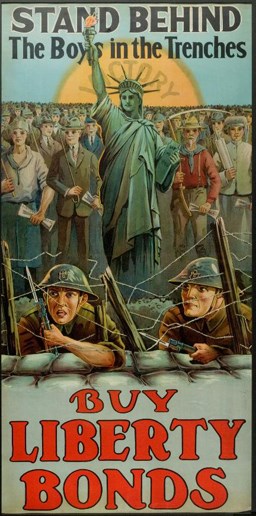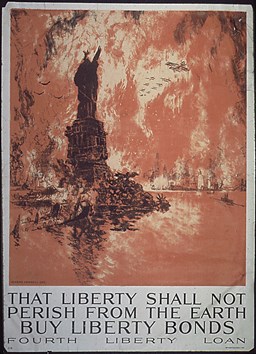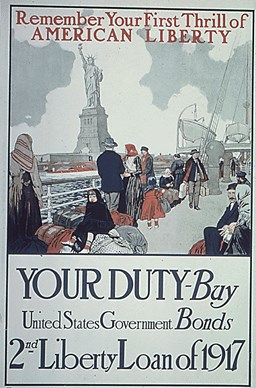
National Park Service, Statue of Liberty NM Wartime tended to diminish the celebration of the Statue as a sign of economic opportunity in the United States and even the call for universal rights for all men and women. At this moment the homeland had to be defended, and the monument came to be seen by soldiers sailing overseas as a symbol of a home to which they might never return. Stories about perceptions of the Statue during the great wars of the twentieth century show that the image served the need to sell war bonds and mobilize for the defense of the United States and its families. Returning servicemen and women were often moved by the sight of the Statue as they entered to New York Harbor following the wars. 
National Park Service, Statue of Liberty NM 
Library of Congress 
National Archives Perhaps the most dramatic use of the Statue of Liberty to evoke a protective and patriotic response was the 1918 Liberty Loan poster designed by Joseph Pennell, which displayed the Statue of Liberty destroyed in the harbor. 
National Archives Not all of the World War I wartime uses of the Statue were militaristic. Some posters encouraged war efforts on the home front. 
National Park Service, Statue of Liberty NM The Statue of Liberty remained a very powerful symbol, embodying a wide range of meanings and adapted every day to represent new ideas. After 9/11, people in New York once again called upon the Statue to express their grief, horror, and rage. |
Last updated: February 26, 2015
